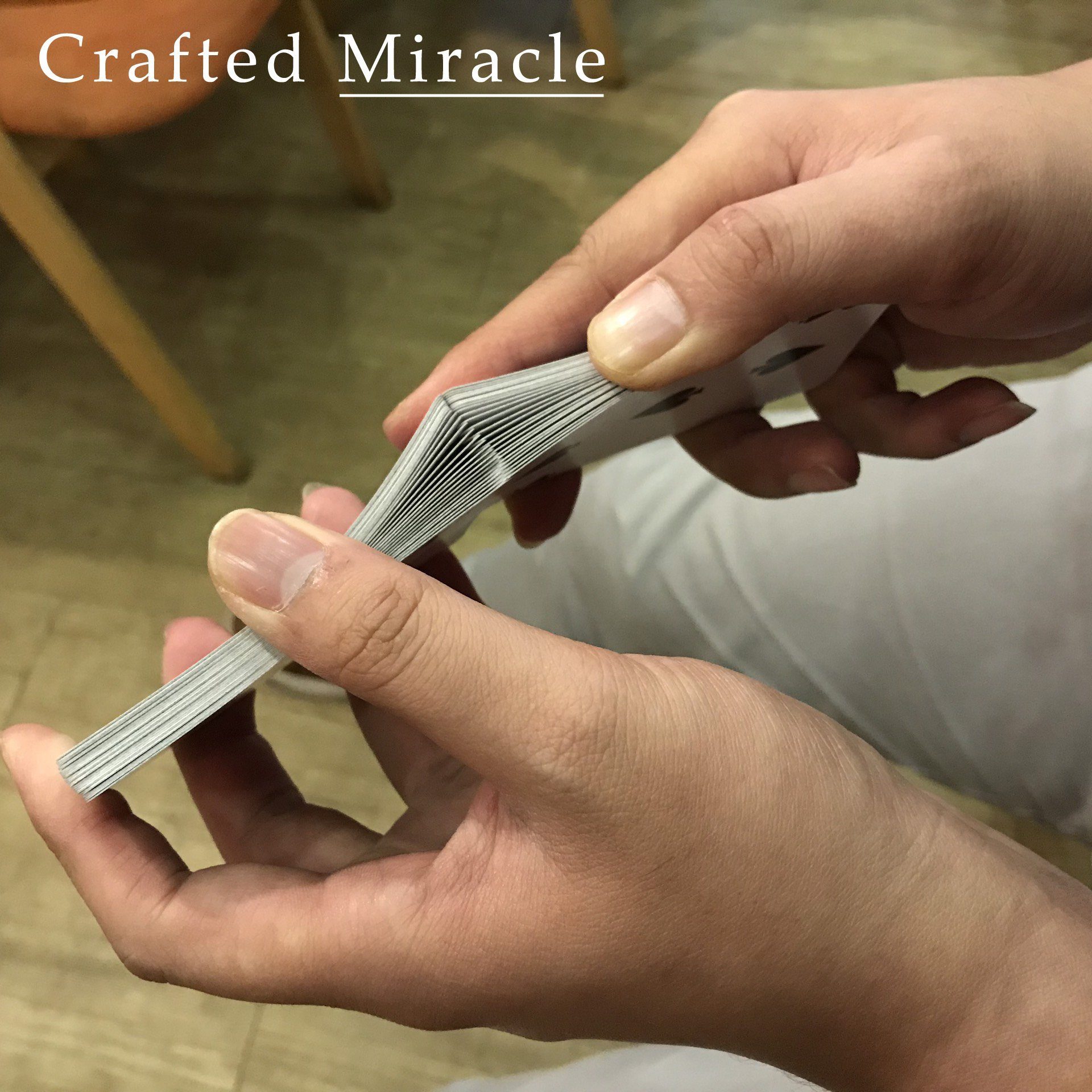Sleight of Hand IS NOT Magic
09 Th04, 2020How master magicians create the sense of real magic
21 Th10, 2020 - Blog
Traditionally cut cards have been marketed as “easier to faro and shuffle”, but does the cutting of the cards really affect our ability to faro shuffle? Let’s debunk this myth
Traditionally cut playing cards means the blade cutting through the printed uncut sheet of cards from its face to its back, instead of the usual back to face. It gets its name because that is how all cards were cut prior to the 1980s
(https://customplayingcardblog.wordpress.com/guide-for-traditionally-cut-cards/)
According to sources, traditionally cut cards require more attention and quality control thus making the process a little costly / time consuming. Hence USPCC switched to what’s known as modern cut since the 1990s for easier quality control and consistency (Ironically their quality control is still as bad)
The belief is that “Traditionally cut cards will affect your faro ability” – I would say YES and NO. To understand this theory, we have to elaborate more.
First of all, there are ONLY TWO WAYS you can faro shuffle – either top down (Top cards from each pile weave in together initially) or bottom up (Bottom cards from each pile weave in together initially)


In / out / straddle / incomplete etc,… are VARIATION of the Faro Shuffle, they are still either top down or bottom up shuffle.
Traditional Cut cards make FACE DOWN BOTTOM UP faro shuffle easier, it means traditional cut cards are optimized for table faro and one handed faro since they are known to be faro shuffled bottom up (and usually the shuffle is performed with the deck facing down). It also means the deck is easier to Faro FACE UP TOP DOWN.
Modern Cut cards make FACE UP - BOTTOM UP faro shuffle easier, which might not be suitable for table faro as the deck is facing up when you do it. Just turn the deck face up when you do a one handed faro and the cards will weave easily. Last but not least, modern cut cards is also easier to faro FACE DOWN - TOP DOWN.
A small tip to remember the way they are faro is: old is opposing, new is allied.

HOWEVER with enough practice, you should be able to do the perfect faro – either one handed, one table or on the hands effortlessly. It all comes down to YOU, a good magician should be able to overcome any situation with any give tools.
In conclusion, is it easier to faro with traditionally cut cards? Yes and No, it also depends on the way you faro (Top Down or Bottom Up). If you are wondering which way is more efficient, the answer would lie within the context and the trick you are performing.